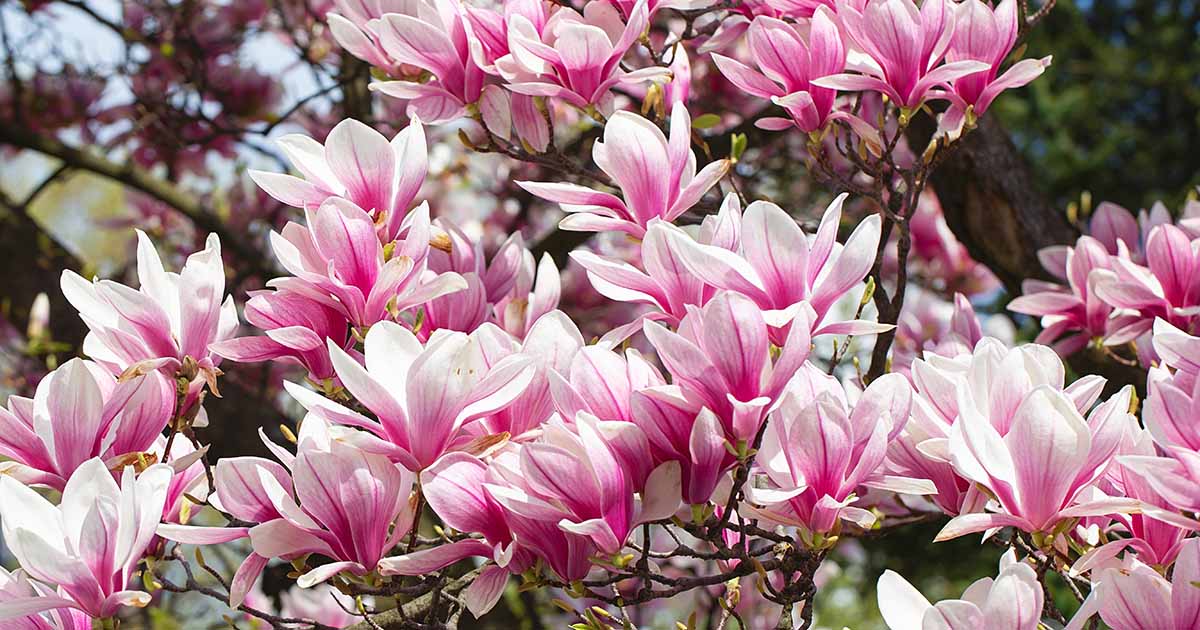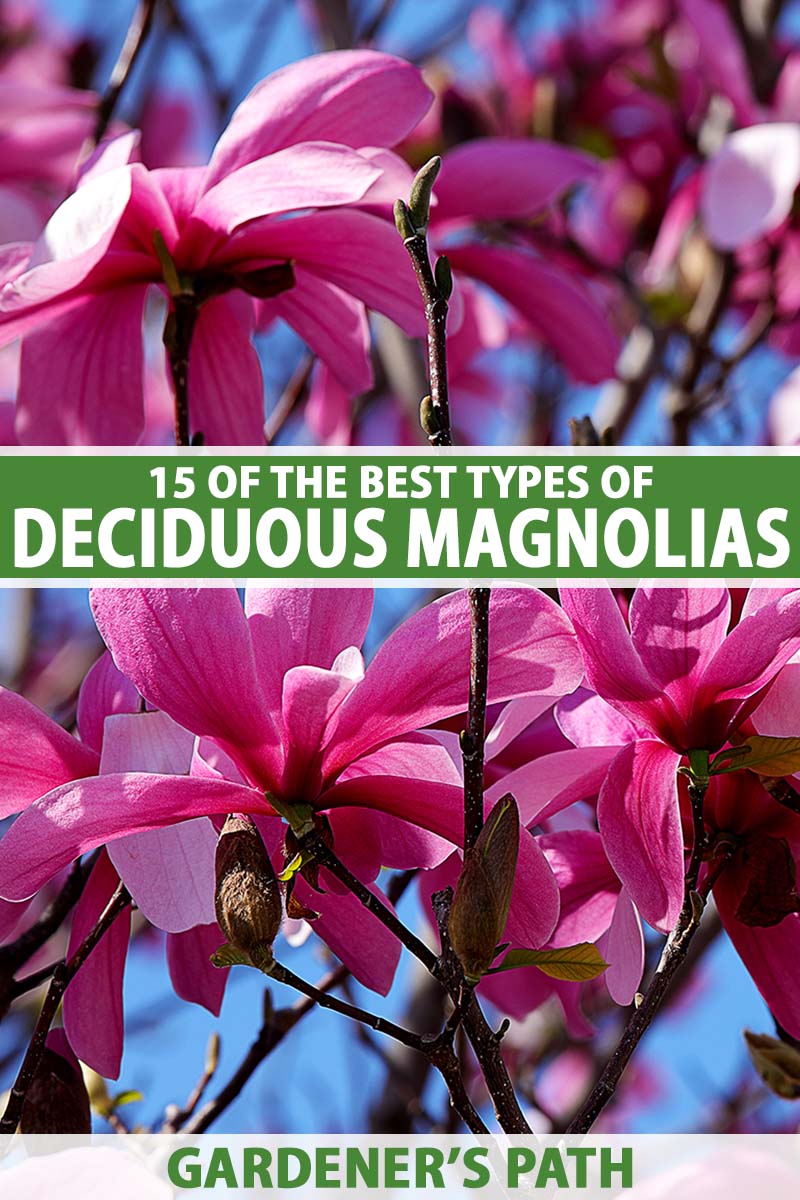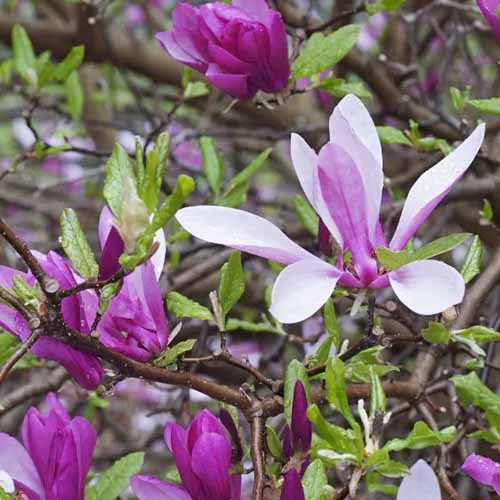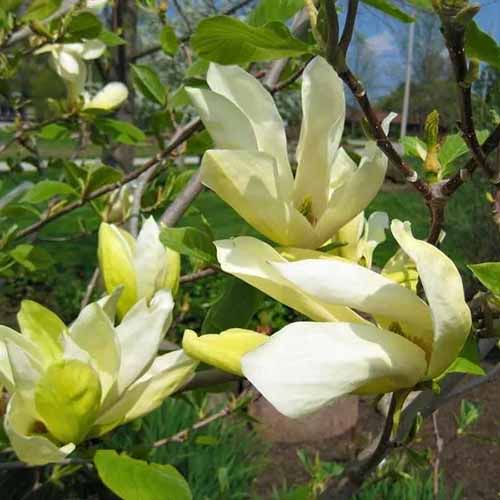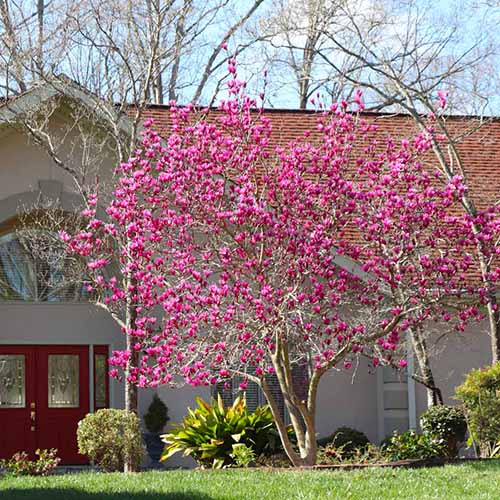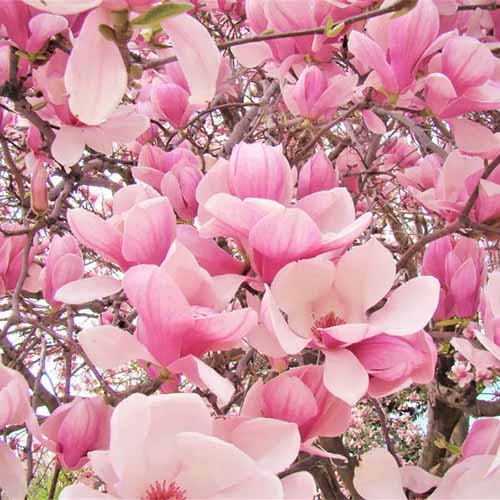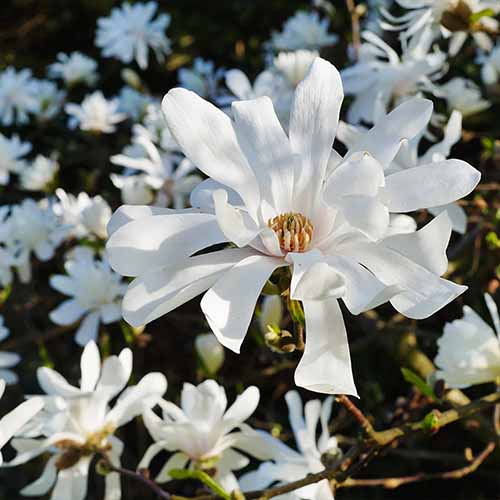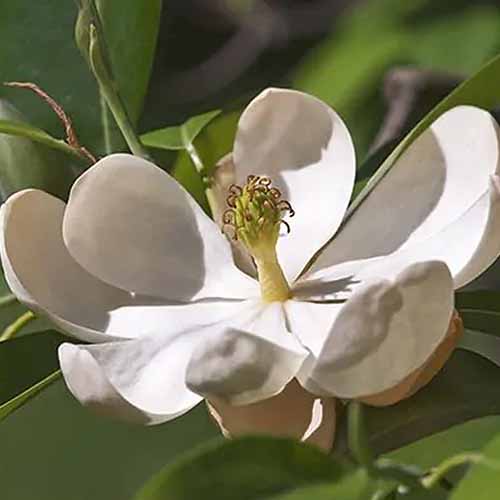15 of the Best Deciduous Magnolias to Grow at Home
Close your eyes and picture a magnolia.
What did you see? If I had to bet, I would guess you imagined a tree with huge, waxy, white blossoms that smelled heavenly.
Zoom in on the leaves, and they’re probably large and leathery, with a green hue on top and a copper tone underneath.
Most of us think of the Southern magnolia (Magnolia grandiflora) when we think of the classic. With its evergreen foliage and dramatic appearance, it grabs the spotlight in our imaginations.
But there are lots of other options out there, including those that lose their leaves in the winter and bloom on bare wood.
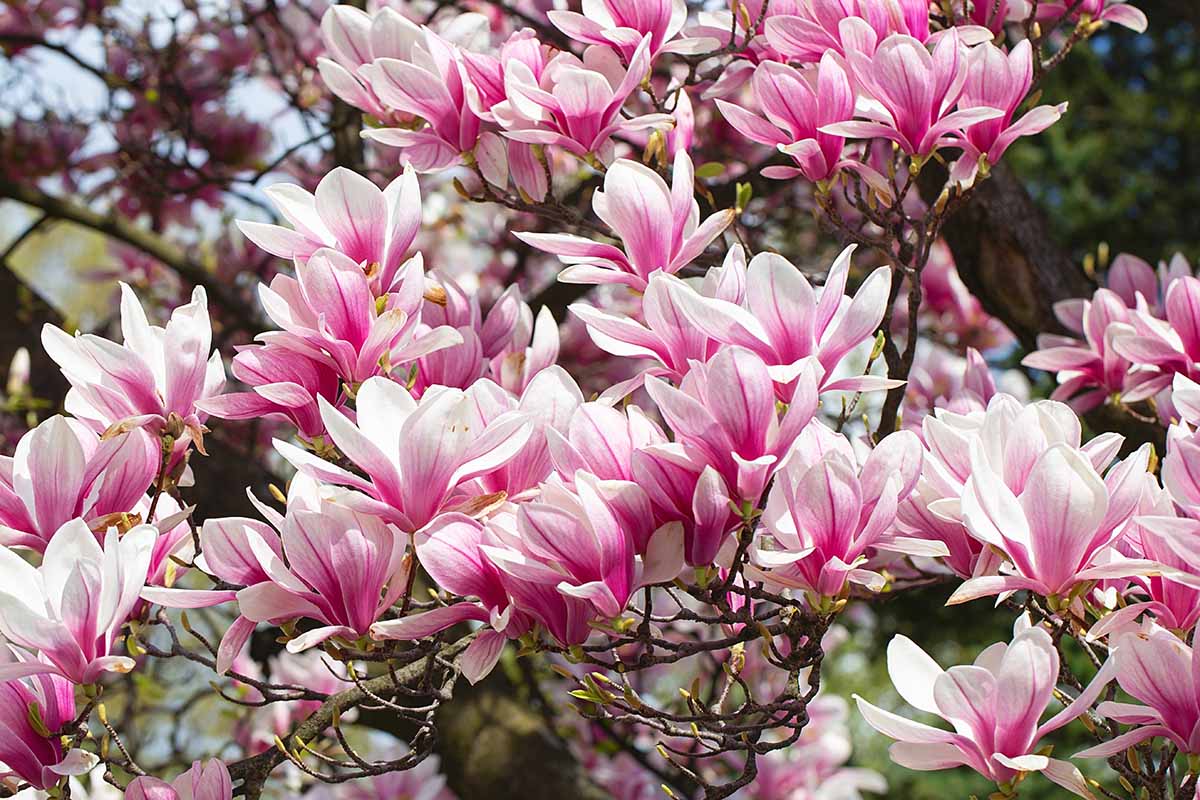

We link to vendors to help you find relevant products. If you buy from one of our links, we may earn a commission.
Why would you want a tree that goes bare in the winter if you don’t have to? Deciduous magnolias are more versatile in the garden, for one.
They come in smaller sizes, there are those that can survive in swampy conditions, and there are some with even larger, showier blossoms than the good old Southern type as well.
Plus, since they lose their leaves each year, those in regions that receive snow won’t have to deal with the branches being weighed down and breaking nearly as often.
It’s about time these lesser-known trees got their time in the spotlight. Move over, Southern magnolia! We’re focusing on deciduous magnolias today.
Here are the beauties we’ll talk about in this roundup:
15 of the Best Deciduous Magnolias
There are around 40 species of deciduous magnolias, and this number includes many garden favorites.
The bigleaf (M. macrophylla), Campbell’s (M. campbellii), cucumber (M. acuminata), Fraser (M. fraseri), lily (M. liliiflora), Sprenger’s (M. sprengeri), star (M. stellata), sweetbay (M. virginiana), umbrella (M. tripetala), and Yulan (M. denudata) and their hybrids are the ones you most commonly see on the commercial market.
Regardless of which you choose, they have fairly similar growing requirements. Learn about growing magnolias in our guide if you need some tips.
To start with, we’ll discuss a cultivar from the Little Girl series, one which has become a mainstay in gardens:
1. Ann
‘Ann’ was bred from M. liliiflora ‘Nigra,’ a small tree with deep purple blossoms, and M. stellata ‘Rosea,’ a larger tree with star-like pink blossoms that fade to white.
The result is a small tree, under 12 feet tall and 15 feet wide, that flowers later in the spring to dodge most late frosts. She might even give you a second round of blossoms in the summer if there’s enough moisture.
This tree is part of the Little Girl series, hybridized by the National Arboretum in the 1950s.
It’s the result of the hard work of geneticist Dr. Francis DeVos, botanist Theodore Robert Dudley, and later, horticulturist William Kosar.
Those involved with the project named their creations after their daughters and wives.
Of the “girls,” ‘Ann’ is usually the first to bloom and the best rebloomer. The flowers are reddish-purple and have a faint fragrance.
Hardy from Zone 3b to 8b, the tree is extremely floriferous.
It’s easy to be a fan of ‘Ann.’ Bring a two- to three-foot shrub home from Nature Hills Nursery in a #3 container.
2. Bigleaf
Living up to its common name, bigleaf, M. macrophylla has leaves that can reach nearly three feet long and half as wide.
That makes them the largest of a single-leaf deciduous tree native to North America. In warmer climates, these trees can be semi-evergreen.
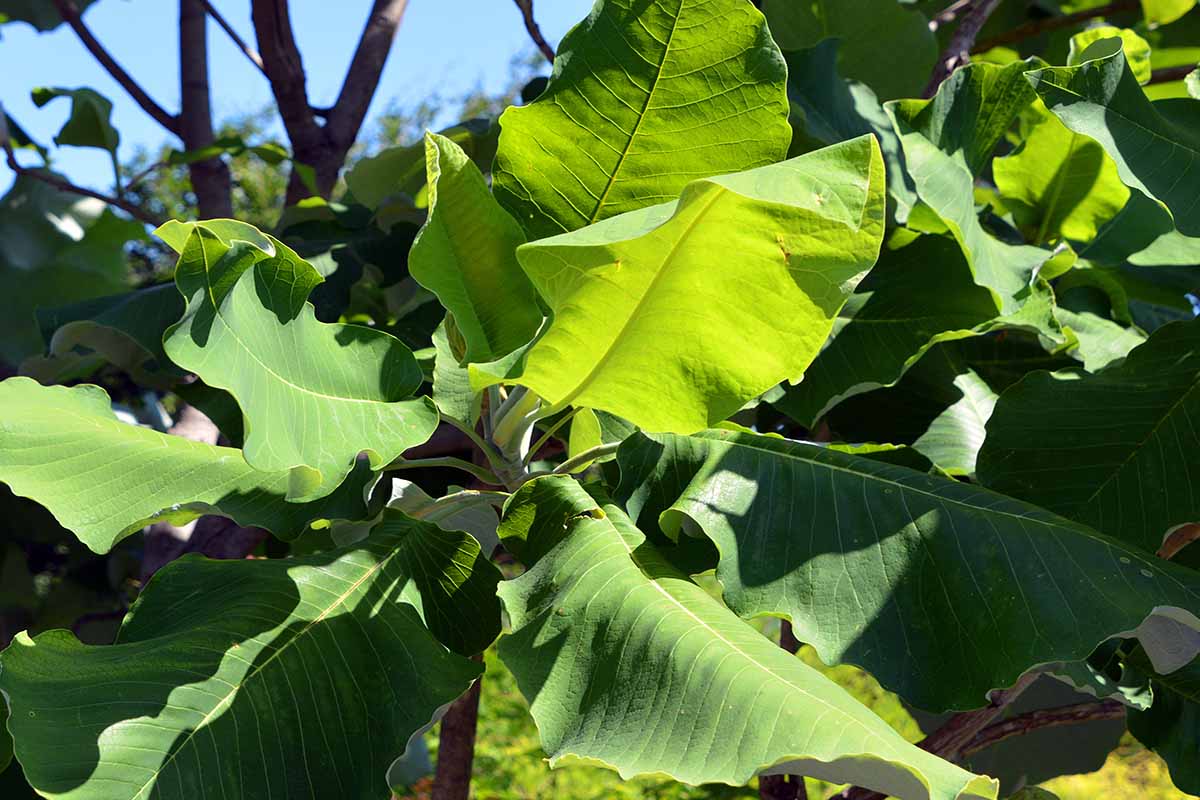

They don’t sacrifice flowers for leaf size, though. The blossoms can be a full foot and a half in diameter. When it comes to non-tropical flowers, they’re the largest in the world.
Really, nothing about this tree is small. While it isn’t the tallest magnolia, it can grow up to 65 feet in the forest understory environment that it prefers.
It takes a long time for this tree to mature to the point where the white and purple flowers appear, at least 12 years.
Sadly, it can be a beast to keep happy in the garden. It needs super loose, well-draining soil, a perfect balance of sun and shade, and consistent moisture.
While it isn’t usually troubled by pests or disease, any extreme variation in moisture and temperature will shorten its life considerably. But many of its hybrids have the dramatically-sized leaves and flowers combined with a more forgiving nature.
Oh, and buy a big, sturdy rake along with your tree, if you decide to plant one of these. You haven’t seen fallen leaves until you have to rake up after your bigleaf!
Bigleafs can grow in USDA Hardiness Zones 5b to 9b.
3. Butterflies
Beautiful ‘Butterflies’ is a cross between M. acuminata ‘Fertile Myrtle’ and M. denudata ‘Sawada’s Cream.’
It takes its flower color from M. acuminata and has bright, canary yellow flowers that maintain their color even as they age. They take on a paler hue in hot climates.
The flowers take their size, scent, and shape from M. denudata, with a pretty cupped form and lemon scent. Each branch is positively smothered in the fluttering flowers.
After the five-inch blossoms fall from the tree, the showy foliage emerges, with each leaf growing up to eight inches long.
Noted magnolia hybridizer Phil Savage, Jr. in Blooming Hills, Michigan, bred ‘Butterflies’ in 1988 and patented it in 1991.
The tree grows to about 20 feet tall, meaning you can prune it to keep it as a tall shrub, in Zones 5 to 9.
Imagine a tree that looks like it’s covered in cheerful yellow butterflies. If that sounds like just the thing you need, visit Nature Hills for a live tree in a #3 or #5 container.
4. Campbell’s
M. campbellii is native to the Himalayan region and grows extremely tall, up to 100 feet in height and 40 feet wide.
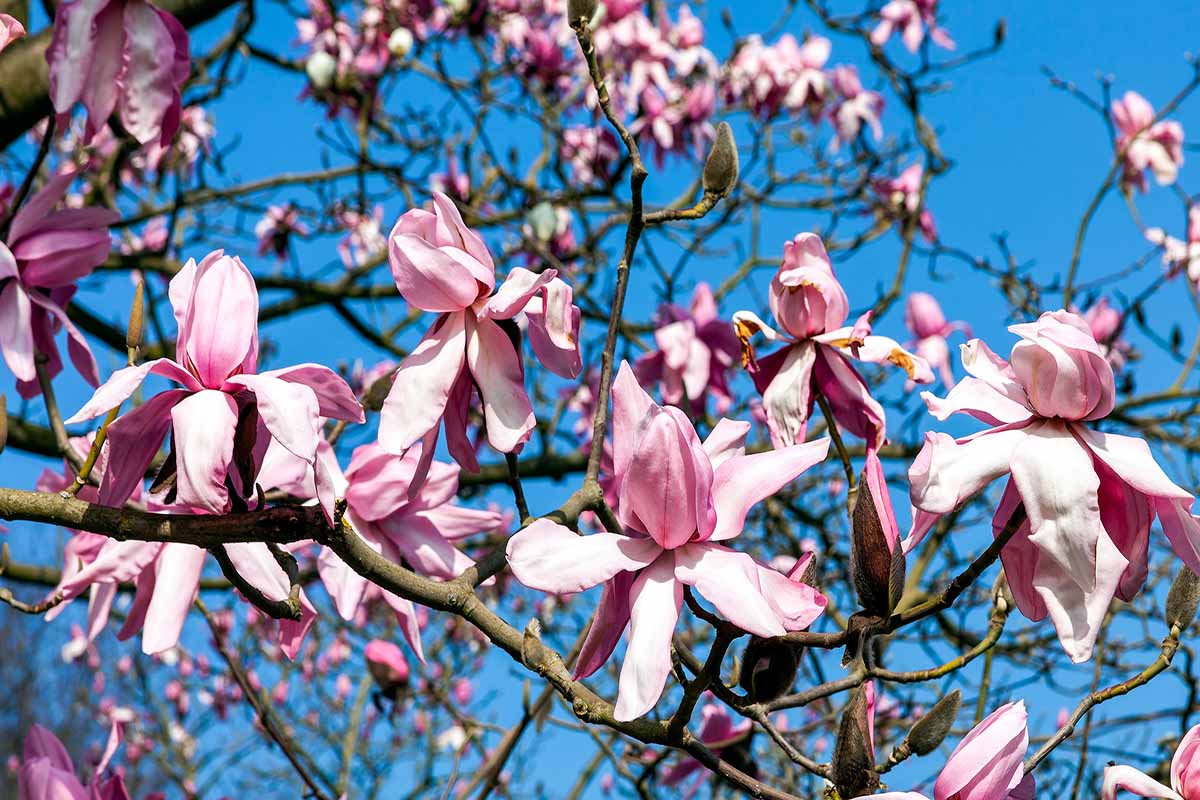

The 10-inch-wide flowers are rose pink on the exterior and white or pastel pink on the interior.
Initially, they are goblet-shaped so they appear dark, but as they age, they open up to reveal their pale insides.
The leaves are dark green on top and pale green underneath.
One of the drawbacks of this tree is that late frosts will kill the flowers if it’s planted in a region that has them, though the subspecies mollicomata flowers a bit later in the year, so it might dodge this issue.
The species has also been used to create numerous beloved late-flowering hybrids and there are several beautiful cultivars like ‘Alba’ and ‘Strybing White,’ with pure white blossoms, and ‘Lanarth,’ with massive deep violet flowers.
The species grows best in Zones 7 to 10.
5. Cucumber
Cucumber trees, M. acuminata, aren’t really adored for their flowers, which are small, greenish-yellow, and appear high up in the tree where they can be difficult to see.
They’re valued for their huge leaves, which grow up to nine inches long with an attractive, open shape.
The foliage takes on a golden hue in autumn, unusual for magnolias which usually lack striking fall foliage.
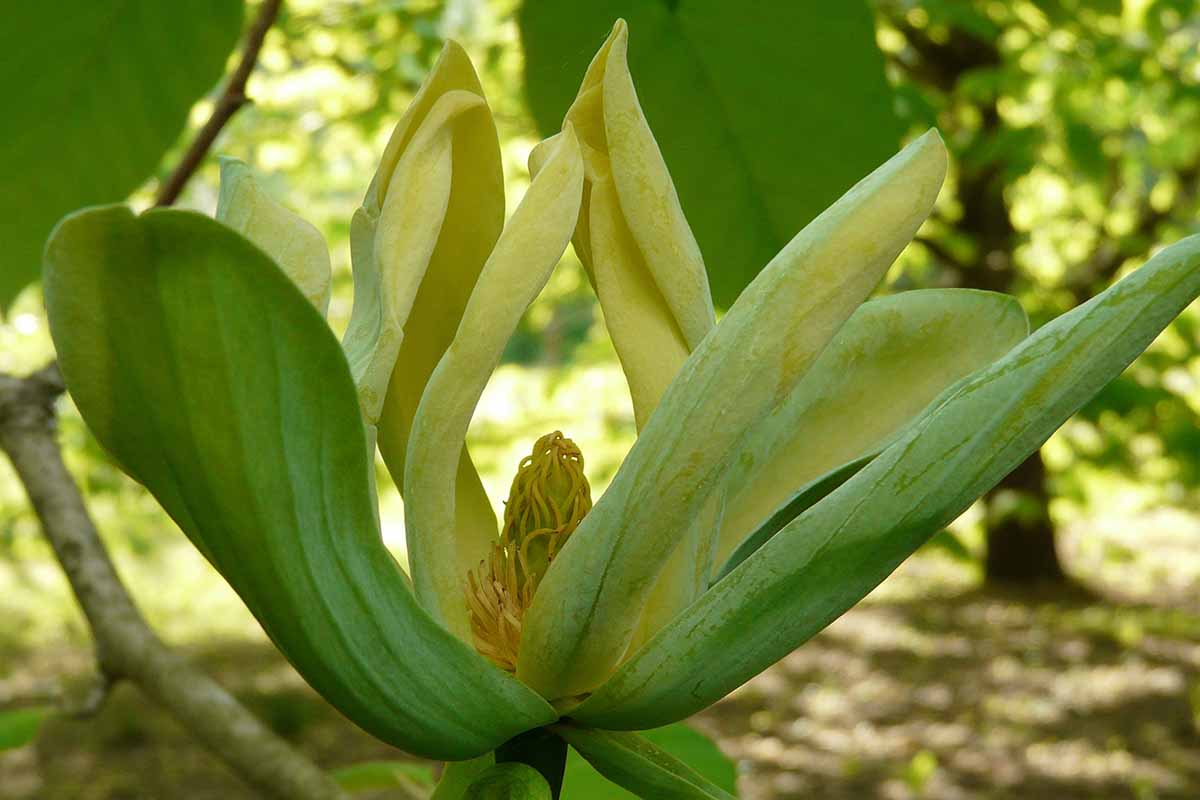

While it might not be wildly popular on its own, this North American native has been used to create many popular hybrids.
These majestic trees can grow up to 70 feet tall with a pyramidal shape. It takes over a decade before they start to produce their slightly fragrant flowers, and fruits which look like tiny cucumbers.
This species is also adaptable, happy in Zones 4 to 8.
6. Daybreak
A cross between M. ‘Woodsman’ and likely M. ‘Tina Durio,’ ‘Daybreak’ was created by plant geneticist and breeder Dr. August Kehr and released in 1990.
It quickly became a popular option on the market and nabbed the Pennsylvania Horticultural Society’s Gold Medal in 2004, and the Royal Horticultural Society’s Award of Garden Merit in 2012.
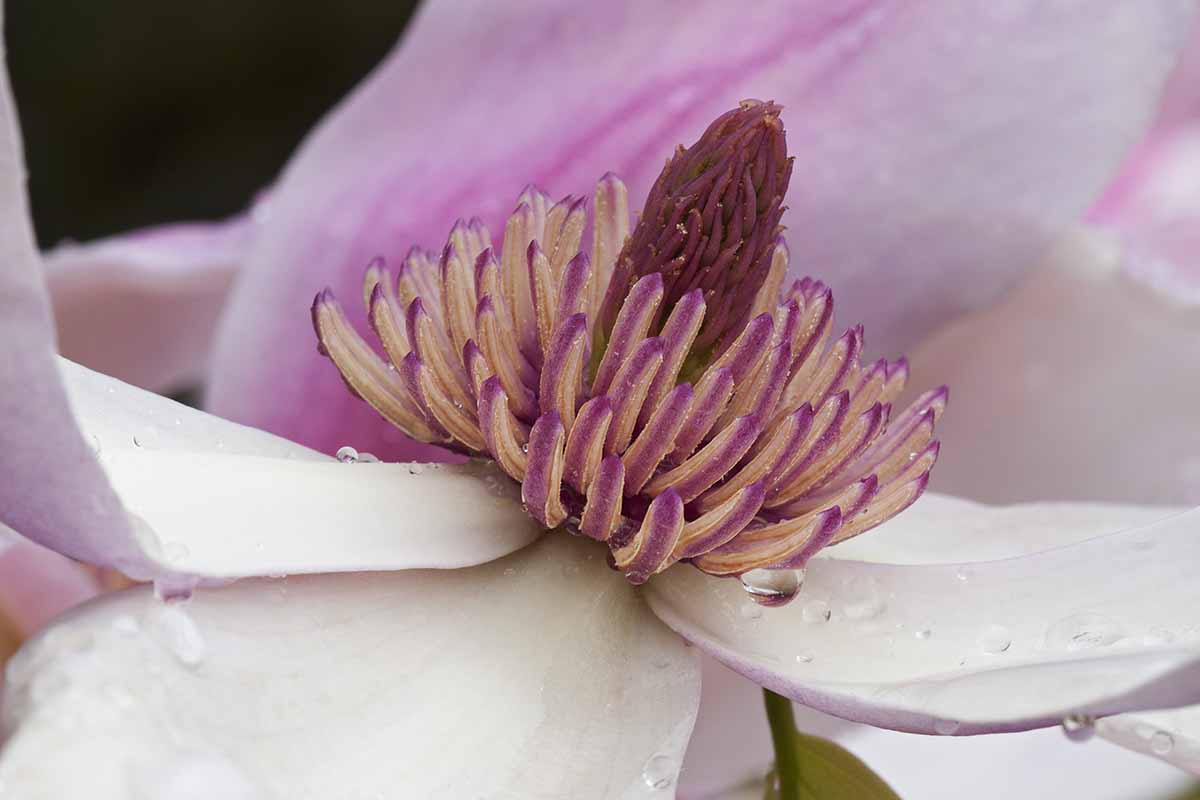

Part of what makes this such a nice tree is that it has a columnar shape, which is uncommon in magnolias. It grows to about 25 feet tall and half as wide.
The rose-pink flowers are huge, up to 10 inches across, and come out late enough that they can usually avoid blossom-killing frosts.
This tree is tolerant of pollution which, combined with its compact growth, makes it a smart option for planting near roadways or in parking strips in Zones 5 to 8.
7. Fraser
Mountain or Fraser magnolias (M. fraseri) are native to the southeastern US ranging from Florida as far north as West Virginia, and west as far as Texas.
They stick primarily to the Appalachian Mountain Range.
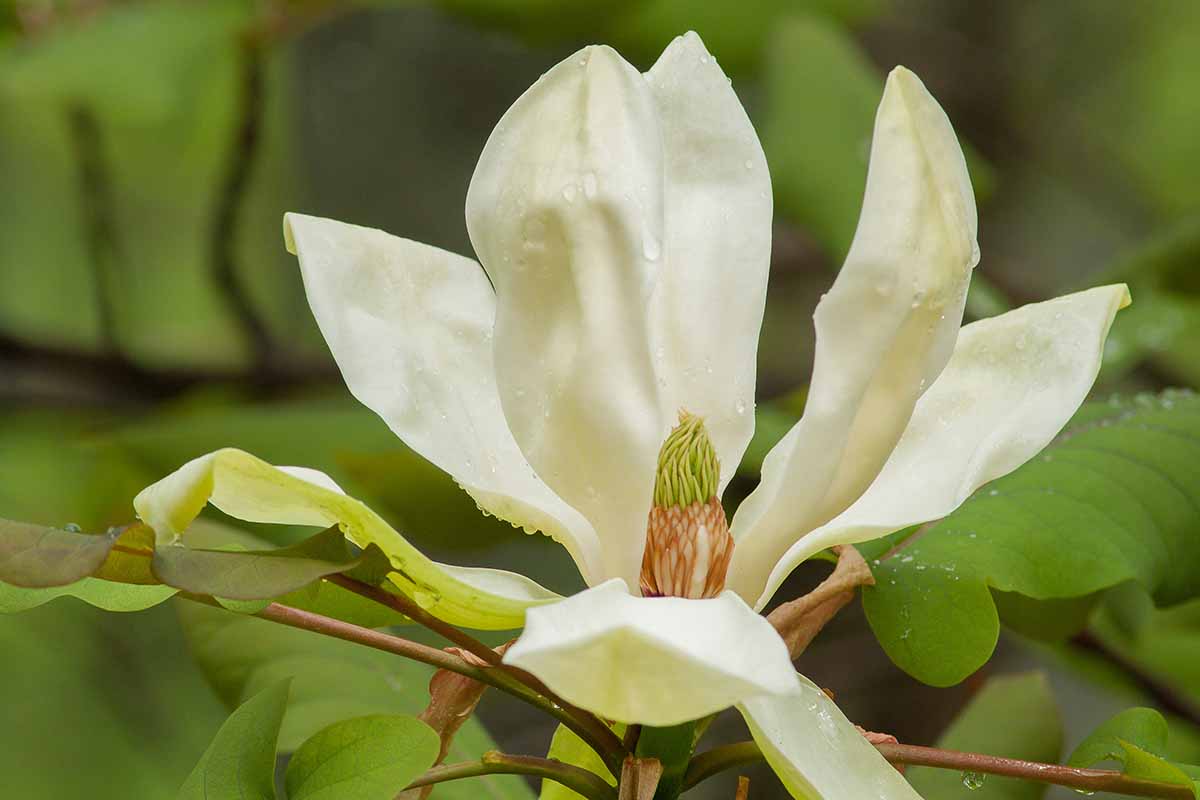

These are some of the smaller magnolias, rarely topping 40 feet. The leaves can be relatively large at around 12 inches long, but they can reach a foot and a half. The flowers are about nine inches wide and they’re creamy white.
When the leaves fall from the tree, you can really get a good look at the scaly brown bark, which adds texture to the landscape.
This species doesn’t tolerate temperatures as cold as some others in the genus. It’s generally restricted to growing in Zones 8b to 10b.
8. Galaxy
Bred by the US National Arboretum in 1963, ‘Galaxy’ is a hybrid cross between M. liliiflora ‘Nigra’ and M. sprengeri ‘Diva.’
It grows to about 30 feet tall with a pyramidal shape. When young, it’s quite narrow, though it will gradually spread – as so many of us do – when it hits middle age.
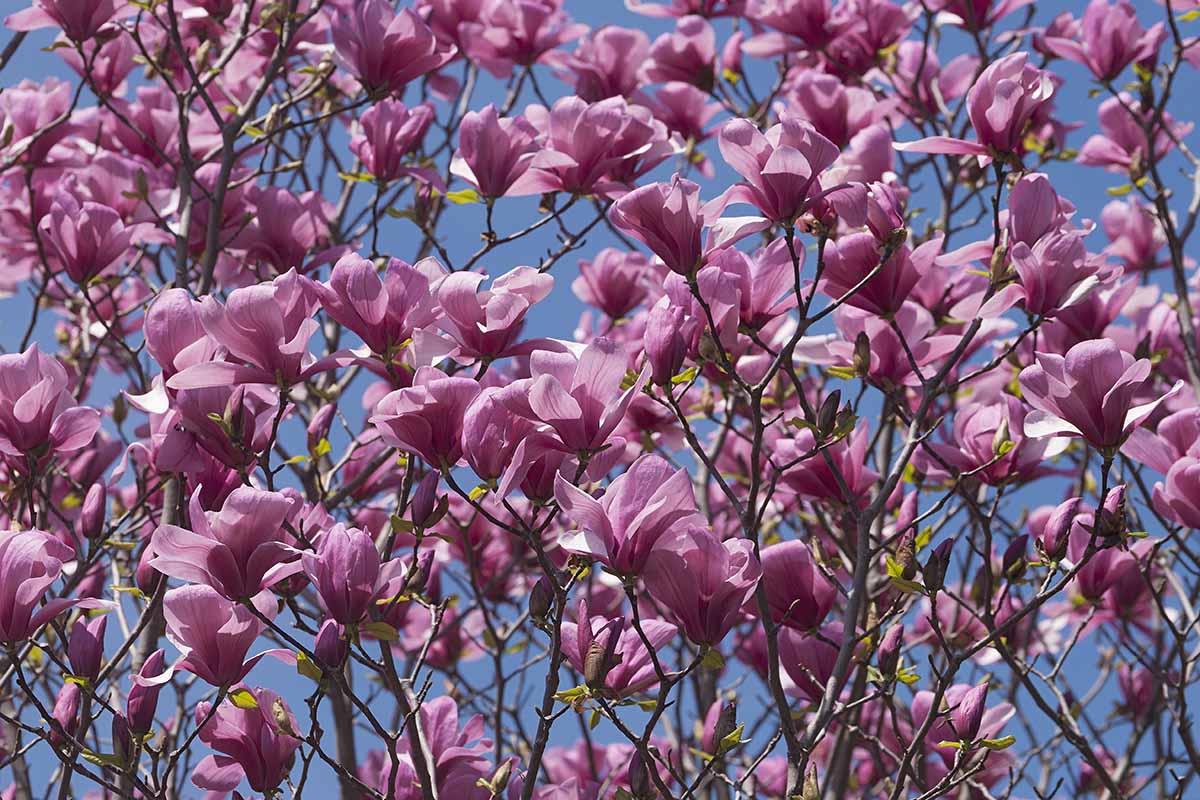

The flowers open later in the year to dodge sneaky frosts in Zones 5 to 9.
Once they do, you’re treated to a galaxy of reddish-purple, 10-inch blossoms, followed by medium and light green leaves that are attractive all on their own.
Plus, it blooms while still quite young, around nine years old.
This cultivar is so nice it nabbed the Pennsylvania Horticultural Society’s Gold Medal in 1992 and the Royal Horticultural Society’s Award of Garden Merit in 1993.
9. Goldfinch
Gorgeous ‘Goldfinch’ (or ‘Gold Finch’) has pale yellow blossoms that emerge late in the spring to dodge those surprise late frosts.
It’s also one of the cold-hardiest yellow types, and the tree blooms younger than many others, so you don’t have to wait as long for the show.
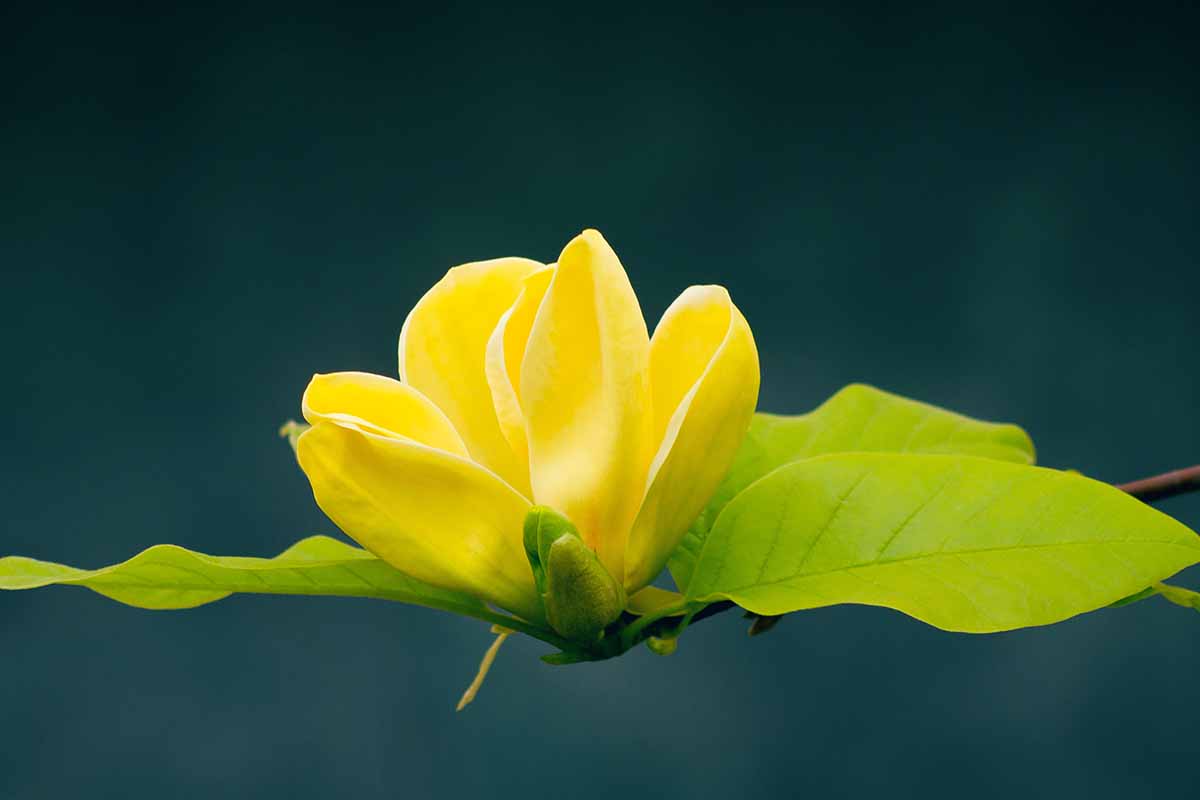

It was bred by renowned hybridizer Phil Savage, Jr. in Michigan.
He used M. acuminata ‘Miss Honeybee’ and M. denudata ‘Sawada’s Cream’ to create a tree with an open, spreading habit in a compact 15-foot tall height with goblet-shaped, 10-inch-wide flowers.
Plant it in Zones 4 to 8.
10. Jane
Many magnolias lose their flowers if a late freeze happens along, as we’ve noted.
If that’s something you want to avoid, choose one of the Little Girl selections bred by William Kosar. They all have the names of “girls,” like Jane and Ann.
‘Jane’ is a popular option because of its vibrant, purplish-pink blossoms that open later in the year so they’re less prone to being killed off by frost.
They also persist longer on the tree than some other deciduous magnolias.
‘Jane’ is part of same series that we talked about earlier. This one was bred by combining M. liliiflora ‘Reflorescens’ and M. stellata ‘Waterlily,’ in 1956.
Of The Girls, ‘Jane’ is the largest, typically coming in at 15 feet tall and 12 feet wide, but often growing up to 20 feet tall.
It also has the most fragrant flowers of the group, though it’s only moderately fragrant on the magnolia scale overall.
Make ‘Jane’ yours and grab a live tree at Fast Growing Trees for planting in Zones 4 to 8.
11. Lily
M. liliiflora hails from southwestern China, but its bold purple-pink blossoms have convinced humans to carry it with them across the planet.
It is widely cultivated across Asia, Europe, and North America.
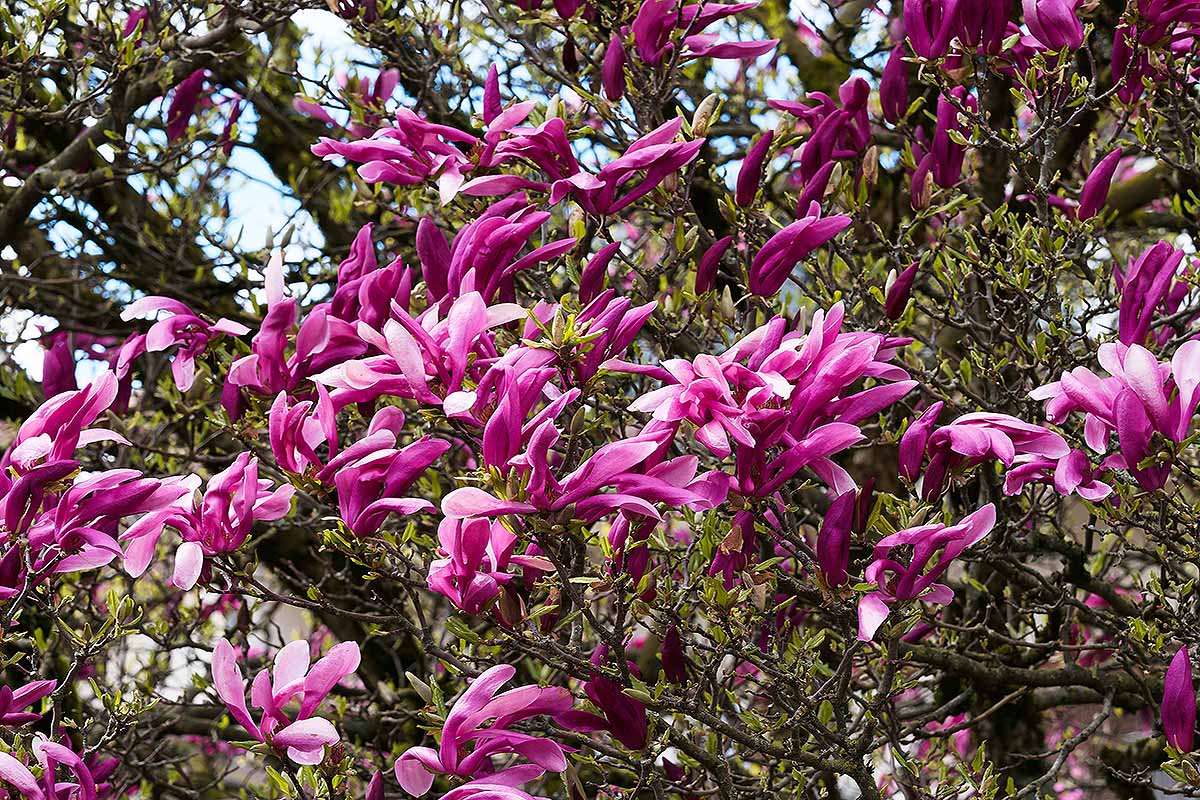

Magnolia liliiflora ‘Nigra’ or Black lily magnolia tree. Ornamental tree with opulent upright reddish-purple to gorgeous pink tulip-shaped flowers and its deep, glowing green leaves.
Known variously as red, purple, lily, tulip, Mulan, and Japanese magnolia, its petite height, at under 15 feet tall and wide, and its profuse, lily-shaped blossoms, have made it extremely popular as a parent for hybridizing.
The famous saucer magnolia, which we’ll cover next, was bred by crossing this tree and M. denudata.
As with most magnolias on this list, the blossoms appear in the spring before the foliage emerges, but this species and some of its hybrids might also have a smaller repeat bloom in midsummer.
While it isn’t as widely known as some of its offspring, lily magnolias would be perfect for those who have a small area for planting in Zones 5 to 9 and want something floriferous even in partial shade.
12. Saucer
Saucer magnolias (M. x soulangeana) were bred by hybridizing M. denudata and M. liliflora.
They are famous for their huge, five- to 10-inch blossoms that emerge early in spring. So early, in fact, that they are often killed off by a late frost, which can be a huge bummer.
You don’t want to be deprived of their glorious performance with hues of white, pink, and purple.
On the bright side, they will sometimes rebloom in summer and again in winter, depending on your climate and available moisture.
The large leaves, which emerge after the flowers fade, are thick, leathery, and dark green. They make a beautiful contrast against the light gray bark of the tree.
This fast-growing hybrid quickly reaches heights of 40 feet or more in Zones 4 to 9.
For flowers the size of saucers, head to Nature Hills Nursery to purchase a tree in a #2 container.
13. Star
Star magnolias (M. stellata) fit into smaller spots and can be grown as large shrubs at under 15 feet in Zones 4 to 9.
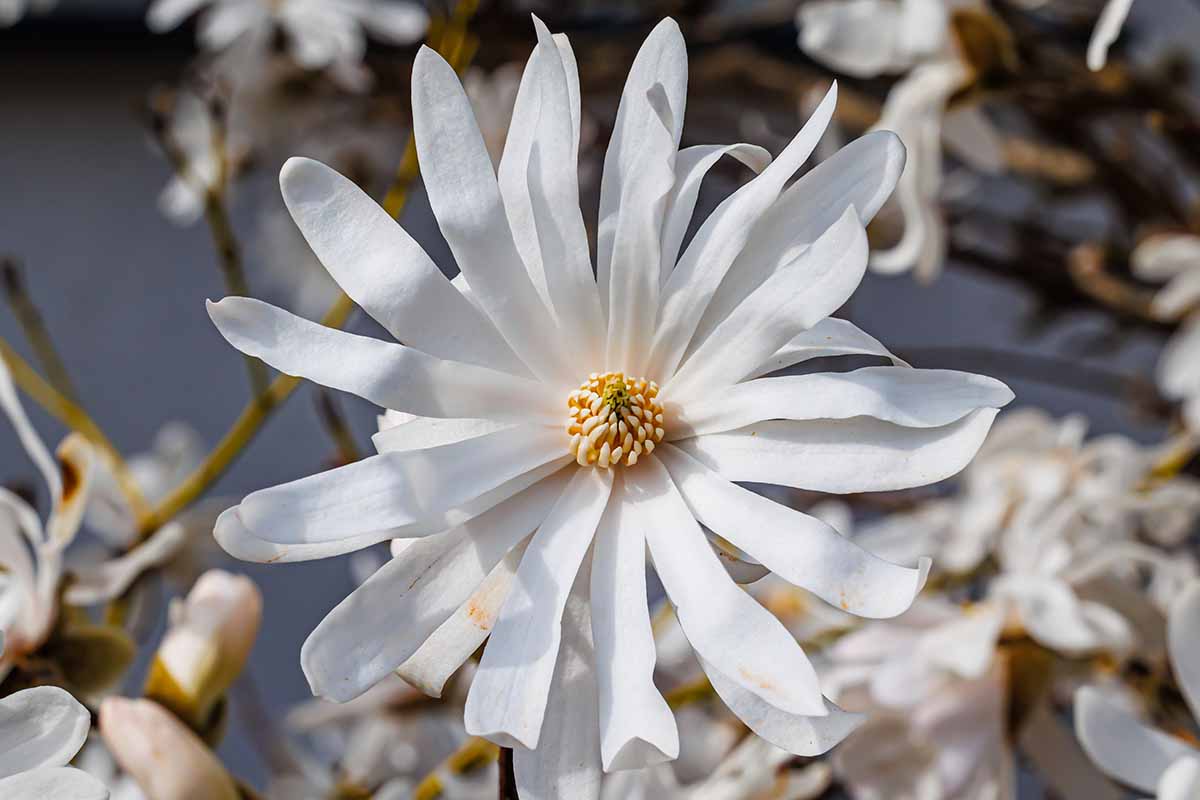

While the white flowers are smaller than those of many other species at under four inches wide, there are so many of them that they practically cover every branch, like the stars twinkling in the night sky in some remote part of the American West.
This tree made its way across the globe after entering cultivation in its native Japan, with many cultivars available.
‘Royal Star,’ in particular, appears as though the tree is covered in white foliage, but when you look closer, you’ll see that it’s covered in white star-like blossoms instead.
While you’re up close, take a deep whiff of the sweet smell coming off those abundant blooms.
Most of us can’t see the Milky Way, but we can enjoy our own galaxy of stars with one of these trees in our yard.
Find yours at Fast Growing Trees in two-gallon, one-to-two-foot, or two-to-three-foot options.
14. Sweet Bay
Sweet bays or sweetbays (M. virginiana) are ideal if you need something for a shady area or one with excessive moisture to suit other magnolias.
Also known as swamp magnolias, swamp sassafras, and white laurel, this tree is native to eastern North America, where it grows in coastal areas or along waterways.
Even in the shade, they produce creamy white flowers with a captivating citrus scent. The flowers aren’t as massive as some others, at a “mere” three inches across.
But there are lots of them. Plus, there are some cultivars like ‘Jim Wilson’ that have larger blossoms, if that’s something you prefer.
In warmer regions, it grows more tree-like and up to 100 feet tall. In cooler regions, it stays more shrub-like and grows under half that height.
As you may have guessed by one of its common names, the leaves resemble those on a bay laurel.
If you live in Zones 5a-10b, pick up a sweet bay for your space at Nature Hills Nursery.
They carry live plants in a #1 container, a #3 container with a two to three-foot tree, or a #5 container with a four to five-foot tree.
15. Umbrella
The umbrella tree or umbrella magnolia (M. tripetala) gets its name from the shiny leaves, which cluster in a circle at the end of the stems.
You could easily see them functioning as an umbrella for a garden gnome.
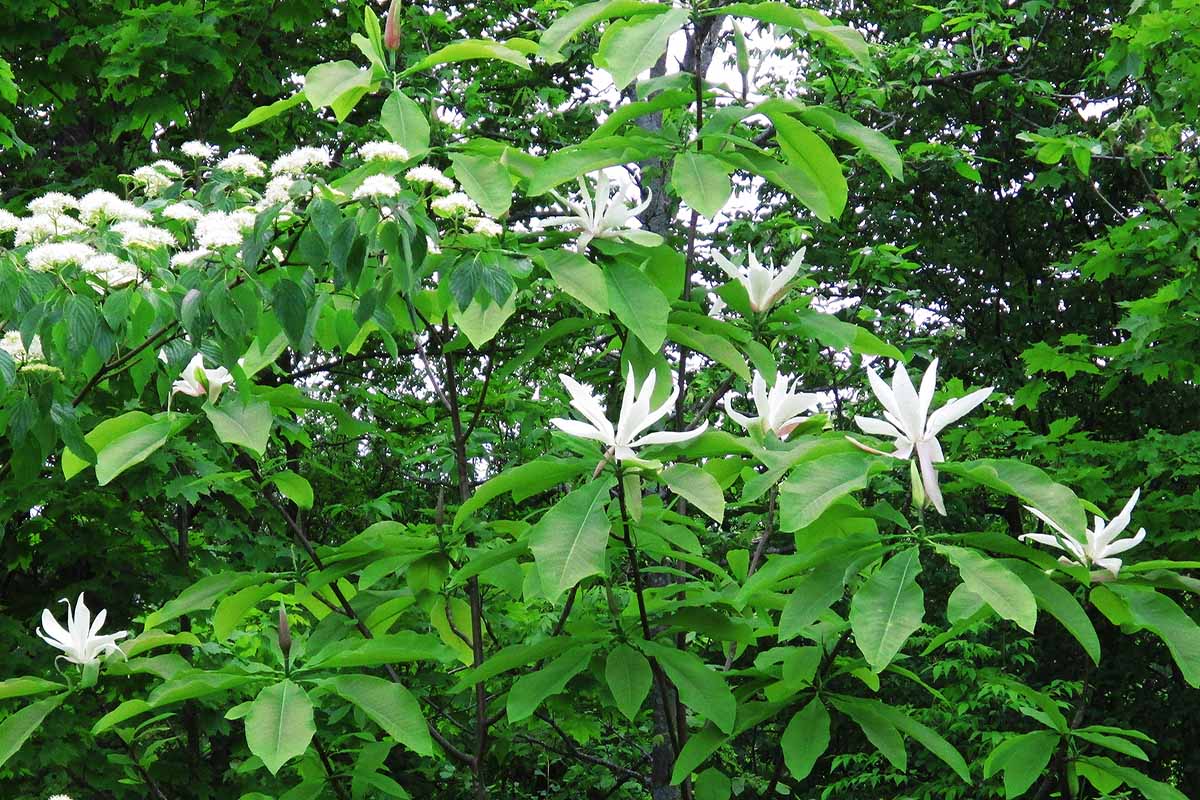

Native to the Appalachian region, it grows in the forest understory, rarely reaching more than 40 feet tall.
It’s not cultivated for its large white and green flowers, pretty though they are. It’s primarily appreciated as a shade tree, though the colorful purple and red fruits are worth a second look.
Beyond lacking the striking floral show that so many people love, the flowers also kind of stink.
So the umbrella tree has found its niche in the world of cultivation as a parent for some beautiful hybrids. The species is hardy in Zones 5a to 8b.
There are So Many Magnificent Magnolias
More than once, I’ve met someone who lamented that magnolias just wouldn’t work in their space.
Maybe they thought they were in a region that gets too cold, or they assumed they needed a huge area. Some people figured the trees were too fussy or would break in the snow.
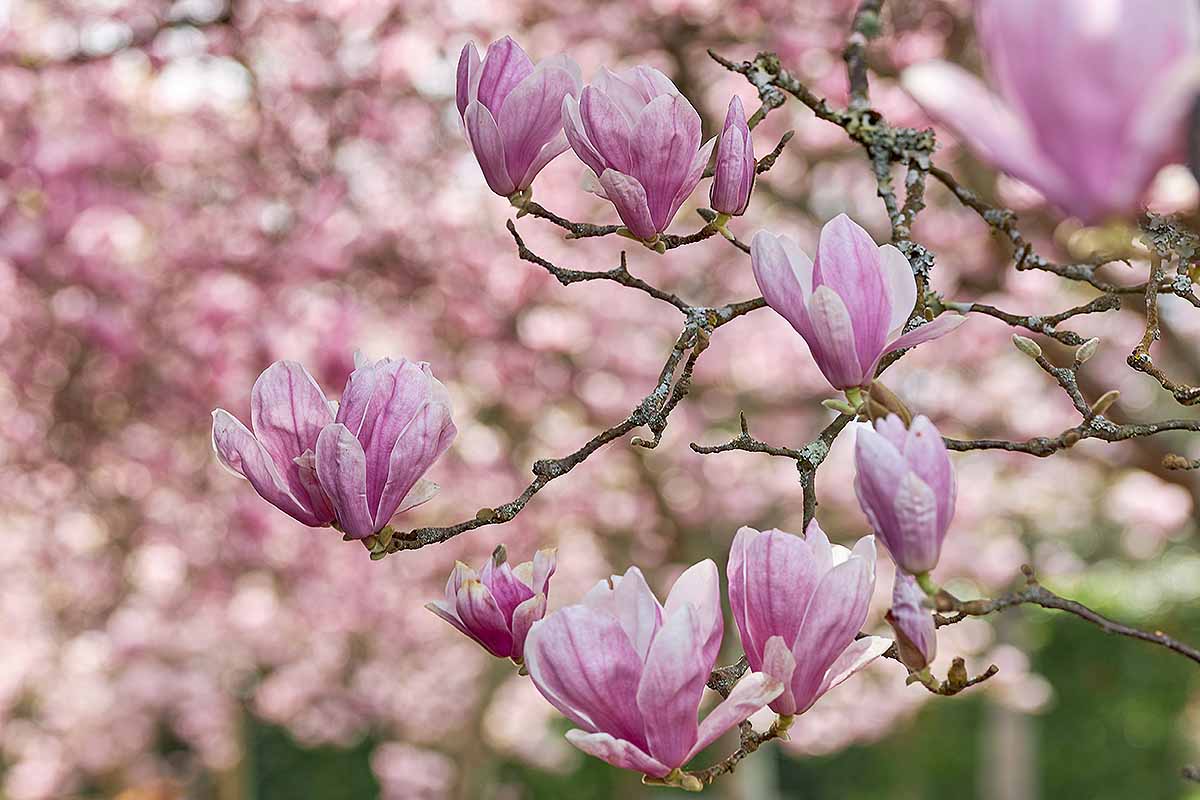

No more excuses. There’s one out there for just about everyone.
Speaking of, which one of these sounds like it might be right for you? Let us know in the comments. Or, if I missed your favorite, share it with us!
If you’d like to learn more about magnolias, check out these guides next:

